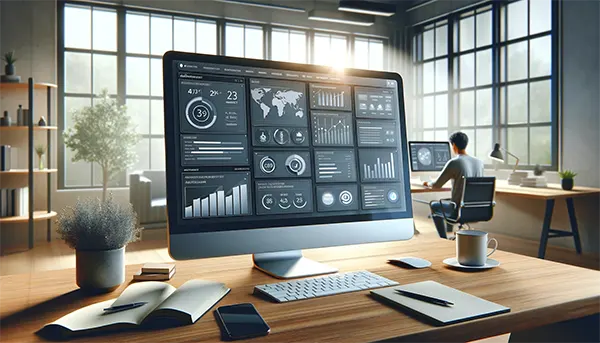
AI-Driven Forex Robots: Why Automated Trading Systems Can Become a Risk Trap
AI-powered forex robots have rapidly evolved over the past decade, transforming from basic rule-based scripts into adaptive systems capable of recognising market patterns, responding to volatility, and executing trades around the clock. Their accessibility and promise of reduced emotional bias attract thousands of traders in 2025. Yet, behind this technological appeal hides a problematic reality: automated decision-making, especially in unpredictable currency markets, can amplify risks, create false confidence, and lead to systemic vulnerabilities that many traders underestimate.
The Hidden Weaknesses of AI-Based Forex Automation
AI forex robots rely on machine-learning models trained on historical data, which means their strategies are designed for past market conditions. While these systems can perform well in stable periods, they often struggle during unexpected macroeconomic events such as geopolitical conflicts, abrupt monetary changes, flash crashes, or liquidity shocks. Machines interpret market anomalies differently from human traders, resulting in rapid losses when conditions deviate from learned patterns.
Another core issue lies in data overfitting. Many commercially sold AI robots are trained to maximise performance in backtests, giving the illusion of accuracy. This creates an impression that the robot “understands” the market, when in reality it is merely repeating patterns that may never recur. In 2025, regulatory bodies highlight this as one of the most common causes of capital drain among retail traders using automated systems.
Additionally, AI robots often lack transparency. Traders frequently do not know which datasets, assumptions, or risk models the robot uses. Without insight into the underlying logic, users cannot assess whether the system aligns with their risk tolerance. This opacity results in misplaced trust, as traders assume automation equals reliability, even when the strategy is fundamentally flawed.
Why Market Volatility Exposes the Limits of Automation
High volatility is one of the most challenging environments for any automated forex system. AI robots may react to sudden price spikes with excessive trade execution, opening multiple positions in milliseconds without evaluating broader economic signals. Human traders can step back, reassess, and account for macroeconomic news. A robot operates blindly based on its predefined parameters.
In periods such as interest rate announcements, unexpected inflation reports, or unplanned government interventions, markets can shift direction within seconds. AI models not built for extreme volatility can misread these signals, turning short-term fluctuations into substantial losses. Even advanced robots using neural networks struggle to interpret contextual information that is not directly present in the dataset.
The foreign exchange market is not purely mathematical. It is influenced by political sentiment, trader psychology, supply chain disruptions, and global economic uncertainty. These intangible factors limit what AI robots can reliably predict. As volatility increases in 2025 due to global inflation cycles and divergent monetary policies, automated systems become more vulnerable, not less.
The Psychological Trap Behind “Set-and-Forget” Trading
Automated trading encourages a hands-off approach that can distort a trader’s perception of risk. When traders stop monitoring their positions, they often underestimate potential losses and rely too heavily on the robot’s past performance. This leads to complacency, especially among beginners who assume automation removes the need for constant oversight.
The convenience of AI trading robots can create an illusion of safety. Many users believe that if the system is driven by advanced algorithms, it must be objective and reliable. However, real-world trading requires continuous decision-making, analysis, and adaptation — skills that machines cannot fully replicate. When traders disconnect from the process, they lose the ability to intervene at critical moments.
Furthermore, the rise of subscription-based robot services in 2025 has increased the risk of financial manipulation. Some providers exaggerate the capabilities of their systems or publish unrealistic backtests. Traders, convinced by the promise of automated profits, subscribe without fully understanding the implications. This creates a vulnerability where reliance on automation replaces proper risk management.
The Danger of Emotional Detachment in Automated Trading
Although emotional trading can lead to impulsive decisions, complete emotional detachment can be equally harmful. When a robot executes trades on behalf of the user, the trader becomes disengaged from the consequences. This detachment can lead to poor long-term judgment, as losses feel less personal and therefore less urgent to address.
Another psychological risk is normalisation of high-frequency losses. Traders may accept small consecutive losses because “the robot is still running”, not realising that these small losses accumulate. This habit encourages passive acceptance of declining account balances until a major loss finally triggers intervention — often too late.
Finally, emotional distance impacts learning. Successful trading requires understanding market behaviour, recognising trends, and learning from mistakes. Overreliance on AI robots removes the educational aspect of trading, leaving users with no actual expertise. Without personal knowledge, traders cannot distinguish between a healthy automated strategy and a dangerous one.

How to Evaluate AI Forex Robots Responsibly in 2025
Responsible evaluation begins with verifying whether the robot’s performance is based on transparent, independently audited data. Traders should look for systems that provide detailed risk metrics, including maximum drawdown, equity curves, slippage estimates, and real-time reporting. Models that hide methodology or rely solely on backtests should raise concerns, as they may not survive dynamic market environments.
It is also essential to assess whether the robot includes adaptive learning mechanisms that update based on current market behaviour. However, even adaptive systems have limitations. Traders should monitor performance regularly and apply manual risk controls such as maximum exposure limits, stop-loss frameworks, and daily loss caps. Automation should support decision-making, not replace it entirely.
Moreover, financial regulators in Europe, the UK, and Asia are increasing scrutiny of AI-based trading tools in 2025. Many jurisdictions now require clearer disclosures, enforce stricter marketing standards, and mandate risk warnings for automated systems. Traders who understand these regulatory developments are better prepared to avoid unreliable providers and detect red flags early.
Practical Guidelines for Safe AI-Assisted Trading
The safest approach combines automation with active oversight. Traders should regularly review positions, evaluate the robot’s logic, and adjust parameters when necessary. This balance ensures that automation enhances efficiency without compromising judgment or control.
Risk diversification is crucial. Instead of relying solely on one AI robot, traders may combine automated strategies with manual analysis or diversify across multiple uncorrelated systems. This lowers the impact of any single model failure and reduces exposure during periods of volatility.
Finally, traders should view AI robots as tools, not substitutes for expertise. Learning fundamental and technical analysis, understanding macroeconomic indicators, and staying informed about global financial trends remain essential skills. Automation can improve execution speed and consistency, but it cannot replace strategic thinking or market awareness.


